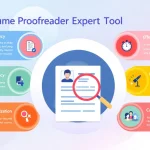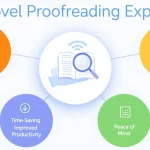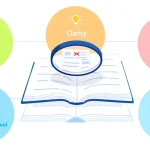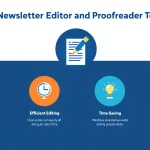Is this tool helpful?
How to Use the Proofreading Specialist Tool Effectively
This tool helps you improve your manuscript by focusing on particular aspects of your book. Follow these steps for the best results:
- Specify the Book Aspect: Enter the specific part of your book you want reviewed. For instance, try “world-building consistency” or “emotional pacing in scenes.”
- Define the Book’s Theme: Describe your book’s central theme or purpose. Examples include “exploration of identity” or “overcoming adversity in a war setting.”
- Provide a Book Excerpt (Optional): Paste a passage you want detailed feedback on. For example, a key character interaction or an intense descriptive paragraph.
- List Specific Concerns (Optional): Highlight particular issues or focus areas you want checked, such as “maintain tone consistency” or “clarify timeline transitions.”
- Generate Feedback: Click the “Generate Proofreading Feedback” button to receive focused, actionable insights on your manuscript.
Once you get the feedback, use it to refine your book, ensuring each element aligns with your vision.
Proofreading Specialist Tool: Definition, Purpose, and Benefits
The Proofreading Specialist Tool offers targeted, expert feedback on your manuscript’s key elements. It goes beyond basic grammar checks to analyze depth, coherence, and style based on your chosen focus areas. This tool supports authors and editors in elevating manuscript quality with precise, tailored suggestions.
Its main goals include:
- Spotting inconsistencies in character behavior, plot, or voice
- Checking alignment with your book’s central theme
- Highlighting areas requiring more detail or simplification
- Providing clear recommendations for narrative flow and style
- Ensuring tone and voice stay consistent throughout the manuscript
By combining machine learning with knowledge of literary structure, the tool delivers objective analysis that helps you polish your writing and strengthen storytelling elements.
Practical Uses for the Proofreading Specialist Tool
This tool fits perfectly into various stages of the writing process and can help you overcome common challenges:
1. Strengthening Character Arcs
If your characters feel flat or inconsistent, focus the tool on “character growth” or “emotion consistency.” It will pinpoint moments where behavior shifts unexpectedly or lacks motivation, making your characters more believable.
Example
“Character motivation for the protagonist in chapters 4 and 9 conflicts with earlier established traits. Consider adding internal conflict or backstory to explain these differences.”
2. Improving Plot Structure and Flow
Use the tool to analyze “scene transitions” or “plot consistency” to ensure your story moves logically and keeps readers engaged. It identifies slow points or rushed conclusions that disrupt narrative flow.
Example
“The transition between chapters 10 and 11 feels abrupt. Adding reflective moments or foreshadowing can smooth the reader’s experience.”
3. Enhancing Dialogue and Voice
If your dialogue feels unnatural or characters sound alike, focus on “dialogue authenticity” or “voice consistency.” The tool highlights passages where language style clashes with character background or setting.
Example
“The dialogue for the supporting character in chapter 7 is too formal compared to their established casual tone. Adjust vocabulary and phrasing for realism.”
4. Maintaining Thematic Consistency
The tool checks if your scenes and character actions support your main themes. Use inputs like “identity exploration” or “moral ambiguity” to verify consistent thematic development.
Example
“The theme of sacrifice is prominent early on but weakens after chapter 12. Weave symbolic actions or dialogue to reinforce this theme throughout.”
5. Polishing Style and Tone
Focus on “narrative tone” or “style consistency” to ensure uniform voice and mood. The tool detects shifts that may confuse readers or break immersion.
Example
“The formal tone established in the prologue shifts to casual narration in chapter 3 without clear purpose. Consider revising for coherence or clarifying this change in storytelling style.”
Benefits You Gain from Using the Proofreading Specialist Tool
- Save Time and Reduce Costs: Instant, precise feedback cuts down multiple rounds of editing and professional proofreading.
- Get Targeted, Relevant Feedback: Specify your book’s problem areas and receive focused suggestions rather than generic corrections.
- Maintain Consistent Quality: The tool applies the same rigorous analysis across your entire manuscript, avoiding human fatigue.
- Receive Unbiased, Objective Input: Feedback is free from personal taste and follows literary principles you set.
- Learn and Improve Your Craft: Repeated use helps you spot frequent issues and develop better writing habits.
- Access Anytime: Get proofreading help whenever you want without waiting for professionals.
- Achieve Holistic Manuscript Refinement: Receive advice on style, pacing, tone, and thematic coherence—not just grammar.
- Iterate Your Way to a Stronger Manuscript: Use the tool multiple times, adjusting your focus as your draft evolves.
Real-World Applications: Who Benefits from This Tool
Aspiring Authors Revising Early Drafts
New writers can catch common mistakes like inconsistent pacing or underdeveloped characters early. The tool helps you fix these issues before moving to costly professional editing.
Experienced Writers Fine-Tuning Their Manuscripts
Seasoned authors use the tool to avoid repetitive patterns, experiment with voice, or check for thematic consistency across complex plots.
Editors and Publishing Professionals
Editors use the tool for quick diagnostic checks on submissions, helping them provide constructive, targeted feedback to authors efficiently.
Summary
The Proofreading Specialist Tool provides focused, actionable feedback tailored to your manuscript’s unique needs. By specifying the aspect and theme, and optionally providing excerpts or concerns, you get precise insights that help you polish every element of your book—from character development and plot pacing to dialogue and thematic coherence.
Whether you’re an author refining your first draft or an editor guiding the final polish, this tool saves time, enhances quality, and strengthens your writing craft with objective analysis at your fingertips.
Important Disclaimer
The calculations, results, and content provided by our tools are not guaranteed to be accurate, complete, or reliable. Users are responsible for verifying and interpreting the results. Our content and tools may contain errors, biases, or inconsistencies. Do not enter personal data, sensitive information, or personally identifiable information in our web forms or tools. Such data entry violates our terms of service and may result in unauthorized disclosure to third parties. We reserve the right to save inputs and outputs from our tools for the purposes of error debugging, bias identification, and performance improvement. External companies providing AI models used in our tools may also save and process data in accordance with their own policies. By using our tools, you consent to this data collection and processing. We reserve the right to limit the usage of our tools based on current usability factors.







